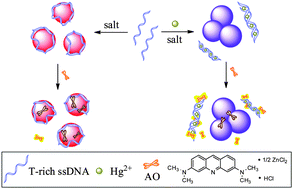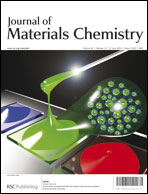A triple-channel optical signal probe for Hg2+ detection based on acridine orange and aptamer-wrapped gold nanoparticles†
Abstract
A triple-channel optical signal probe has been designed for the detection of Hg2+ ions. In the absence of Hg2+, the thymine-rich ssDNA wrapped AuNPs were well dispersed. Thus, the colour of the solution is pink-red; the resonance light scattering (RLS) signal is low; the fluorescence of


 Please wait while we load your content...
Please wait while we load your content...